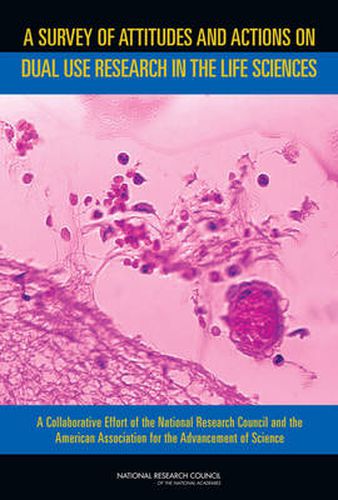Readings Newsletter
Become a Readings Member to make your shopping experience even easier.
Sign in or sign up for free!
You’re not far away from qualifying for FREE standard shipping within Australia
You’ve qualified for FREE standard shipping within Australia
The cart is loading…






The same technologies that fuel scientific advances also pose potential risks–that the knowledge, tools, and techniques gained through legitimate biotechnology research could be misused to create biological weapons or for bioterrorism. This is often called the dual use dilemma of the life sciences. Yet even research with the greatest potential for misuse may offer significant benefits. Determining how to constrain the danger without harming essential scientific research is critical for national security as well as prosperity and well-being. This book discusses a 2007 survey of American Association for the Advancement of Science (AAAS) members in the life sciences about their knowledge of dual use issues and attitudes about their responsibilities to help mitigate the risks of misuse of their research. Overall, the results suggest that there may be considerable support for approaches to oversight that rely on measures that are developed and implemented by the scientific community itself. The responses also suggest that there is a need to clarify the scope of research activities of concern and to provide guidance about what actions scientists can take to reduce the risk that their research will be misused by those with malicious intent.
$9.00 standard shipping within Australia
FREE standard shipping within Australia for orders over $100.00
Express & International shipping calculated at checkout
The same technologies that fuel scientific advances also pose potential risks–that the knowledge, tools, and techniques gained through legitimate biotechnology research could be misused to create biological weapons or for bioterrorism. This is often called the dual use dilemma of the life sciences. Yet even research with the greatest potential for misuse may offer significant benefits. Determining how to constrain the danger without harming essential scientific research is critical for national security as well as prosperity and well-being. This book discusses a 2007 survey of American Association for the Advancement of Science (AAAS) members in the life sciences about their knowledge of dual use issues and attitudes about their responsibilities to help mitigate the risks of misuse of their research. Overall, the results suggest that there may be considerable support for approaches to oversight that rely on measures that are developed and implemented by the scientific community itself. The responses also suggest that there is a need to clarify the scope of research activities of concern and to provide guidance about what actions scientists can take to reduce the risk that their research will be misused by those with malicious intent.